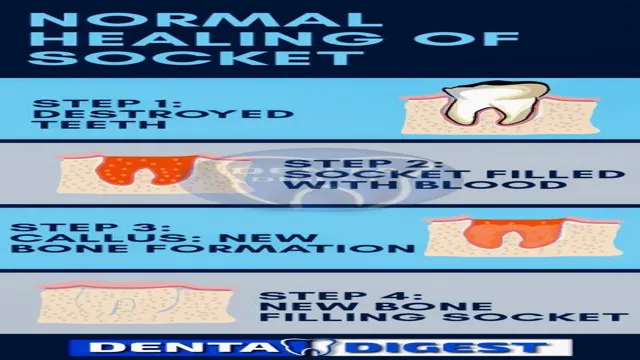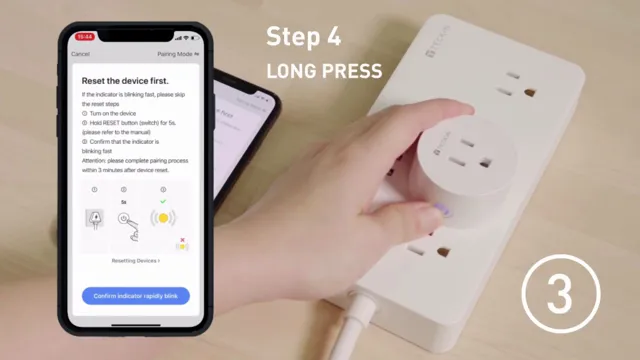How Quickly Does Dry Socket Pain Set In? Symptoms and Timeframe Explained

Dry socket pain can be excruciating and can make it difficult to eat, sleep, and carry out normal daily activities. The condition occurs when the blood clot that normally forms after a tooth extraction fails to form, or becomes dislodged before the wound has a chance to heal. This can cause the underlying bone to become exposed, leading to severe pain that can radiate throughout the jaw and face.
But how quickly does this pain set in? Is it immediate or does it take some time before the discomfort becomes apparent? In this blog post, we’ll explore the timeline of dry socket pain and discuss what you can do to alleviate your symptoms if you suspect you’re suffering from this condition.
Understanding Dry Socket
Dry socket is a painful condition that can occur after a tooth extraction. The pain from dry socket occurs due to the exposure of the underlying bone and nerves, which can cause severe discomfort. So, how quickly does dry socket pain set in? Typically, the pain of dry socket will begin to set in a few days after the tooth extraction.
However, it can also occur immediately after the procedure or up to a week later. Common symptoms of dry socket include persistent pain in the affected area, bad breath, and an unpleasant taste in the mouth. If you’re experiencing any of these symptoms, it’s important to contact your dentist or oral surgeon immediately for treatment.
They can provide you with medication to manage the pain and promote healing, as well as further instructions for caring for the affected area.
Definition and Causes
Dry socket is a common dental condition that can be quite painful and uncomfortable. It is usually the result of a blood clot that fails to form or dissolves too early after a tooth extraction. The socket then becomes inflamed and susceptible to bacterial infection, causing severe pain that can radiate to the ear, jaw, and head.
Other potential causes of dry socket include poor oral hygiene, smoking, using oral contraceptives, and traumatic extractions. The symptoms of dry socket typically appear within three days after an extraction and can last for up to a week or more. To prevent dry socket, it is essential to follow proper oral hygiene practices and avoid smoking and drinking through a straw for at least 24 hours after a tooth extraction.
If you experience severe pain or discomfort after a tooth extraction, it is best to consult your dentist right away to determine the cause and receive appropriate treatment.

Symptoms of Dry Socket
Dry socket is a painful condition that can occur after a tooth extraction, when the blood clot that forms in the socket is dislodged or dissolves before the wound has had a chance to heal. This exposes the underlying nerve endings and bone, leading to intense pain, bad breath, and an unpleasant taste in the mouth. If left untreated, dry socket can cause an infection and delay healing, leading to further complications.
To prevent this condition, it is important to follow good oral hygiene practices, avoid smoking, and follow your dentist’s postoperative instructions carefully. If you experience symptoms like severe pain, an empty socket, or a fever, contact your dentist immediately for proper care. With prompt treatment, you can effectively manage dry socket and ensure a speedy recovery.
When Does Pain Start?
Dry socket pain can set in as soon as a couple of days after having a tooth extracted. This is why it’s important to be aware of the symptoms that come with this condition. Pain that starts in the socket where the tooth was pulled out is the most common symptom.
This pain can be constant and throbbing and may radiate to other parts of the face. Other symptoms of dry socket include bad breath, a foul taste in the mouth, and swollen lymph nodes. If you’re experiencing any of these symptoms after having a tooth extracted, it’s important to contact your dentist right away.
They may recommend over-the-counter pain relief medication or prescribe something stronger to help manage the pain. They may also advise you to rinse your mouth with warm salt water or prescribe a medicated mouthwash to help prevent infection. In summary, dry socket pain can set in quickly after a tooth extraction, and it’s important to be aware of the symptoms and seek treatment promptly to manage the discomfort and reduce the risk of complications.
Timing of Dry Socket Pain
Dry socket pain is a common occurrence after a tooth extraction. So, when does the pain typically start? Well, the short answer is that it can vary from person to person. However, in most cases, the pain from dry socket will begin within a few days after the extraction.
Usually, the pain will start to increase in intensity, peaking on the third or fourth day after the extraction. This is because the blood clot that forms in the extraction site has either been dislodged or dissolved, leaving the bone and nerves exposed. This can lead to intense pain, which can radiate through the jaw, neck, and ear.
Overall, it’s essential to act as soon as you notice symptoms relating to dry socket pain, such as sharp and throbbing pain, bad breath, and an unpleasant taste in your mouth. Seeking prompt dental attention is key to managing and treating the condition effectively.
Factors Affecting the Onset of Pain
Pain can begin in various ways and at different times, depending on a range of factors. Diverse factors can affect the onset of pain, including physical activities, injury, medical conditions, age, and emotions. Some individuals may experience pain after engaging in strenuous exercise or activities, while others may develop discomfort due to medical conditions, such as arthritis or fibromyalgia.
Age is also a factor, as older adults are more likely to experience chronic pain compared to younger individuals. Additionally, emotional stress, anxiety, or depression can contribute to pain development, as they can trigger physical reactions in the body that manifest as discomfort. Overall, understanding the specific factors that contribute to pain onset can help individuals better manage and prevent pain, thereby improving their quality of life.
Statistics and Data on Pain Onset
When it comes to pain onset, there are various factors that can contribute to its beginning. Injuries, illnesses, and chronic conditions are all potential causes of pain. However, it’s important to note that pain doesn’t always start immediately after an injury or diagnosis.
In fact, it can take time for pain to develop after an initial event. This is known as perplexity in pain onset. Burstiness can also occur, where pain may start and stop abruptly.
It’s also worth noting that pain can differ in onset depending on the individual and the condition. For some, pain may begin gradually over time, while for others it may occur suddenly and acutely. Additionally, the severity and type of pain can also vary between individuals.
For example, some may experience mild discomfort while others may have intense and debilitating pain. Overall, pain onset is a complex and multifaceted topic. It’s important to consult with a healthcare provider if you are experiencing pain to determine the cause and appropriate treatment.
By being aware of potential causes and variations in pain onset, individuals can better understand and manage their symptoms.
Preventing and Treating Dry Socket
Dry socket is a painful condition that can occur after a tooth extraction. The symptoms include severe pain that can radiate to the ear, an unpleasant taste in the mouth, and bad breath. It usually occurs within a few days after the extraction, but the question is, how quickly does dry socket pain set in? Well, it usually takes two to four days for the pain to start, but it can occur as early as 24 hours after the tooth extraction.
The pain is caused by the exposure of nerves and bone in the empty socket, as the clot that forms after the extraction has been dislodged or dissolved, leaving the socket unprotected. To prevent dry socket, avoid smoking and drinking through a straw, as the sucking motion can dislodge the clot. You can also ask your dentist about the use of antibiotics and medicated dressings to prevent or reduce the risk of developing dry socket.
If you do develop this painful condition, your dentist can prescribe painkillers and clean the socket to promote healing.
Preventative Measures
Dry socket is a painful condition that can occur after a tooth extraction, but there are preventative measures that can be taken to reduce the risk of developing it. One of the most important is to follow proper aftercare instructions, including avoiding smoking or using straws, as the suction can dislodge the blood clot that forms in the socket. This clot is essential for proper healing and preventing infection.
Another preventative measure is to maintain good oral hygiene, including gentle brushing and rinsing with salt water. If you do develop dry socket, treatment options include pain medication, a medicated dressing or packing to alleviate discomfort, and antibiotics to prevent infection. By taking these preventative measures, you can reduce your risk of developing dry socket and ensure a smoother recovery after your tooth extraction procedure.
Treatment Options
Dry socket can be a painful condition that can occur after a tooth extraction. To reduce the risk of developing dry socket, dentists may recommend certain preventative measures such as avoiding smoking, using a straw, and practicing good oral hygiene. However, if dry socket does occur, there are several treatment options available.
Over-the-counter pain medications, such as acetaminophen or ibuprofen, can help alleviate the discomfort. Your dentist may also suggest prescription-strength pain relievers or mouth rinses to reduce swelling and promote healing. In some cases, your dentist may need to clean the affected socket and place a medicated dressing to help ease the symptoms.
It’s essential to contact your dentist if you experience any persistent pain after a tooth extraction, as they can provide the appropriate treatment to help you feel more comfortable. Remember, taking preventative steps can not only reduce the risk of developing dry socket but also help promote oral health and wellbeing.
Final Thoughts
Dry socket pain can vary from person to person. Generally, symptoms of dry socket will start to appear within a few days after a tooth extraction. However, it is possible for the pain to set in as early as a few hours following the procedure.
It’s important to keep an eye out for any sudden and severe pain, and to contact your dentist if you suspect that you may have a dry socket. Other common symptoms that may accompany dry socket include bad breath, a foul taste in the mouth, and visible bone within the socket. While there is no way to predict how quickly your dry socket pain will set in, being aware of these symptoms and seeking prompt treatment can help you manage your discomfort and speed up the healing process.
Conclusion
To put it succinctly, dry socket pain can come on like a bolt of lightning. It’s like waiting for a delayed flight–sometimes it’s a minor annoyance and other times it feels like an eternity. But when it comes to dry socket pain, the speed at which it sets in can vary from person to person and situation to situation.
So if you’ve recently had a tooth extraction, don’t be caught off guard–keep an eye out for any sudden and severe pain that might signal the onset of dry socket. And remember, if in doubt, always consult with your dentist!”
FAQs
What is dry socket and how does it cause pain?
Dry socket is a painful condition that occurs after a tooth extraction. It happens when the blood clot that forms in the socket where the tooth was removed breaks down or dislodges, exposing the underlying bone and nerve endings. This can cause intense pain, swelling, and bad breath.
How quickly does dry socket pain set in after a tooth extraction?
Dry socket pain typically sets in 2-4 days after a tooth extraction, but it can take up to a week for symptoms to appear. The pain is usually sudden and severe, and may radiate to the ear and other parts of the head and neck.
Who is at risk for developing dry socket after a tooth extraction?
People who smoke, use birth control pills, have poor oral hygiene, or have had a previous history of dry socket are at higher risk for developing the condition. Additionally, people with impacted wisdom teeth or those who have undergone a complex tooth extraction are more likely to experience dry socket.
How is dry socket treated?
Dry socket is typically treated with pain management techniques, such as over-the-counter or prescription pain medications. Your dentist may also recommend rinsing the affected area with salt water or using an antiseptic mouthwash. In some cases, a medicated dressing may be placed over the socket to promote healing.
Can dry socket be prevented?
While not all cases of dry socket can be prevented, there are steps you can take to reduce your risk. These include avoiding smoking and using tobacco products, practicing good oral hygiene, following your dentist’s instructions after a tooth extraction, and avoiding drinking through a straw or spitting excessively.






